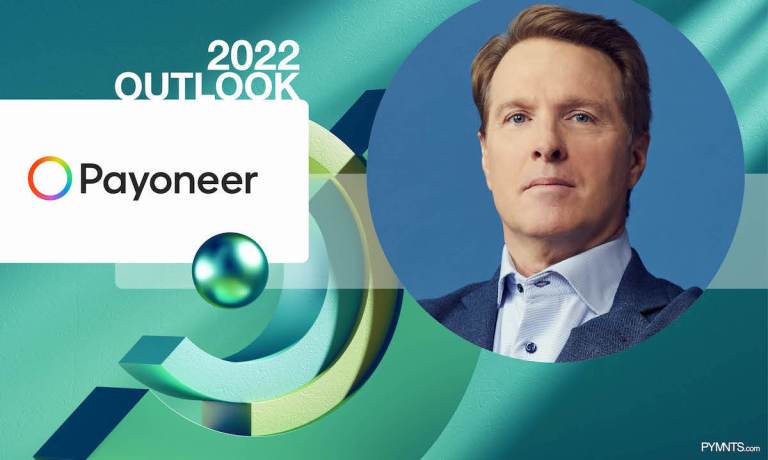
Digitalization has opened a world of opportunity for smart, hardworking, resourceful entrepreneurs to reach new heights of success, writes Payoneer Chief Revenue Officer Robert Clarkson in the PYMNTs eBook “Endemic Economics: 32 Payments Execs on the ‘Next Normal’ That Never Happened.” Expect innovations that make paying them simpler to increasingly take center stage.
Digitalization of commerce and payments is clearly a win-win for businesses of all sizes and from different industries. Global ecommerce platforms like Alibaba, Walmart, eBay and Amazon all gain from access to high-quality sellers from around the world, who in turn now sell to literally billions of customers. Freelancers amplify their reach thanks to digitalization, offering clients around the globe better choice. Small and medium-sized businesses (SMBs) count on digital tools and platforms to manage their webstores, source services and materials, and pay suppliers and workforce regardless of where they are located.
Digitalization has opened a world of opportunity for smart, hardworking, resourceful entrepreneurs to reach new heights of success. It’s given us a structural change in global commerce that is here to stay. But now we need to reset the digitalization discussion to accommodate innovations at the intersection of payments and commerce.
We expect three such innovations to take center stage in 2022 and beyond. They demand not only our attention but also a shift in mindset, to one that embraces the fundamental changes in the structure and operation of our industry that digitalization has fostered.
First, buy now, pay later (BNPL) is here to stay, and consumers will expect it to be a ubiquitous choice at checkout. This is not a phenomenon that will be restricted to big-ticket purchases, mature markets or certain industries. For example, consumers from emerging markets, who are often used to technological leapfrogging and are comfortable accepting digital payment innovations, are finding it a convenient way to manage their purchasing power. SMBs also are eager to find their own BNPL-type solutions, freeing themselves from reliance on their traditional local funding sources. This innovation will further cement the role of non-bank providers within the global financial services industry.
Second, digitalization is changing business models. Businesses of all size are now digitally native, born online and positioned globally rather than locally. Whether they’re selling on marketplaces or in the B2B space, they need to be able to bill and collect in multiple currencies and geographies from Day 1 — and be able to scale up this capability as their businesses grow. What if (some would say when) today’s digital business environment expands into the metaverse? Those of us who empower eCommerce need to innovate not just to accommodate new markets, but also to enable new ways of doing business as they emerge.
Third, and perhaps most important for our industry and the communities we serve, we need to be fostering open and inclusive discussions about the future of technology in payments and commerce. The emergence of digital currencies, from central bank digital currencies (CBDCs) and stablecoins to cryptocurrencies, has raised an important public discussion around the role of money in our societies. Just as with Web3 and the Internet of Things, our consideration of these significant innovations must be about more than achieving technological advances and efficiencies. It’s also about fostering trust, expanding access to finance, ensuring accountability — issues that deserve our careful and collaborative deliberation.
The new digital economy is being defined today. It includes structural changes impacting everything from ecommerce business models and payment processes to the ability of anyone, anywhere to participate in and benefit from the global digital economy. Our reset to this next chapter of digitalization in payments and commerce will prove key to our mutual success.